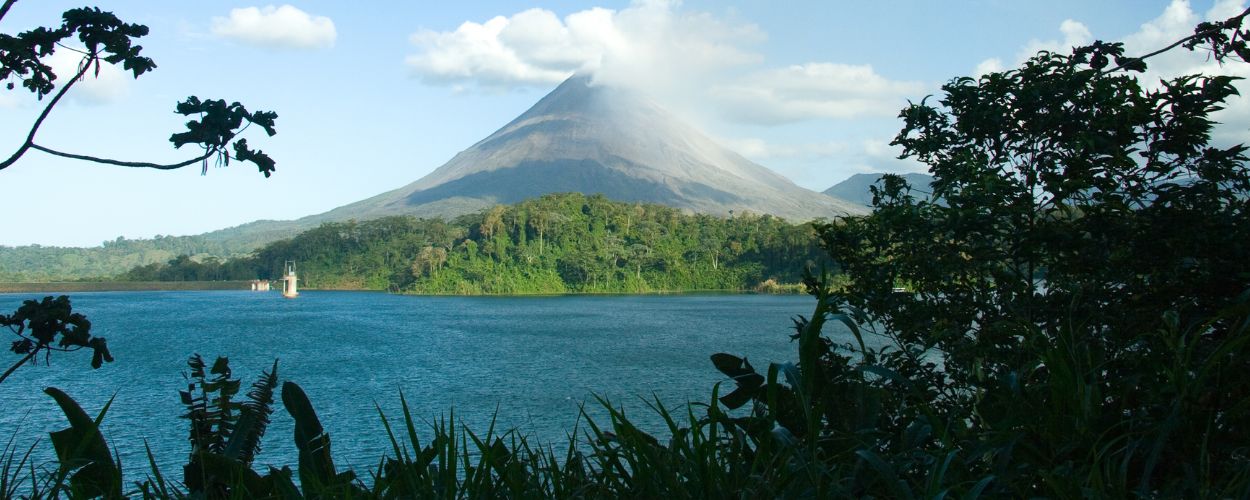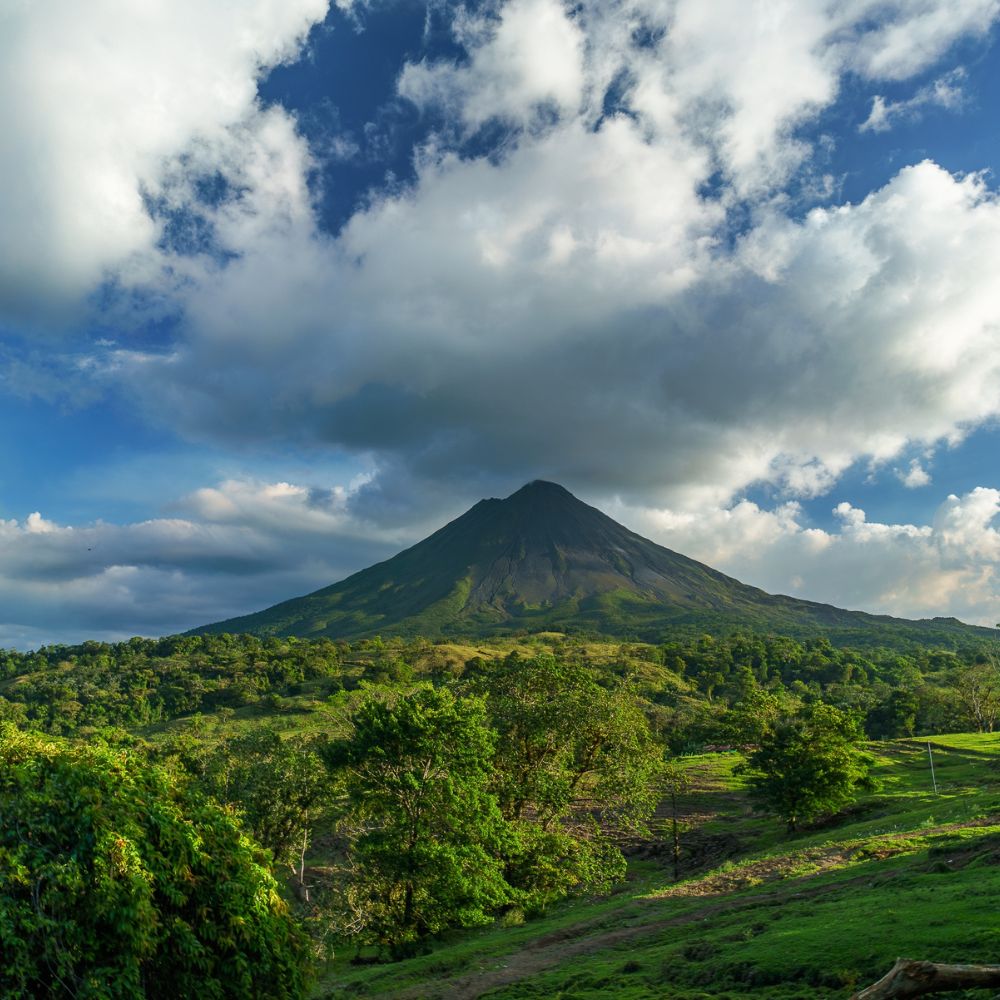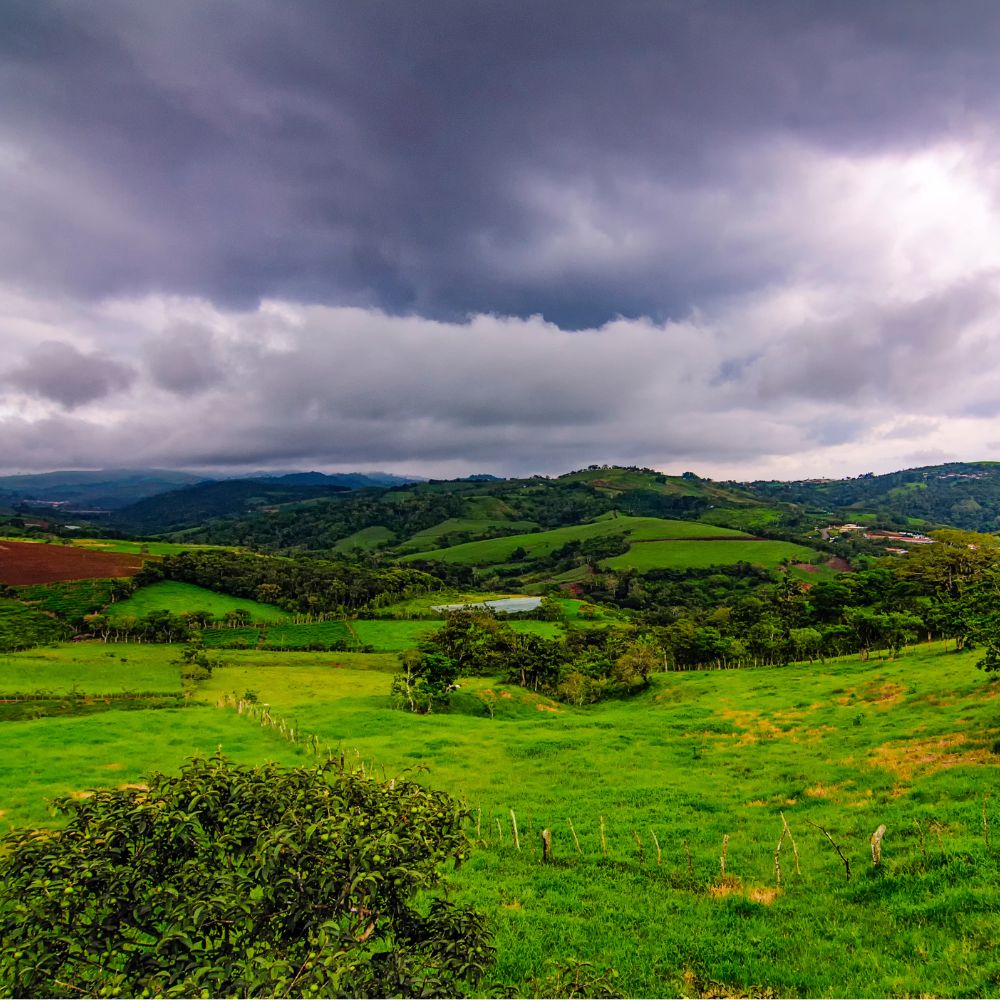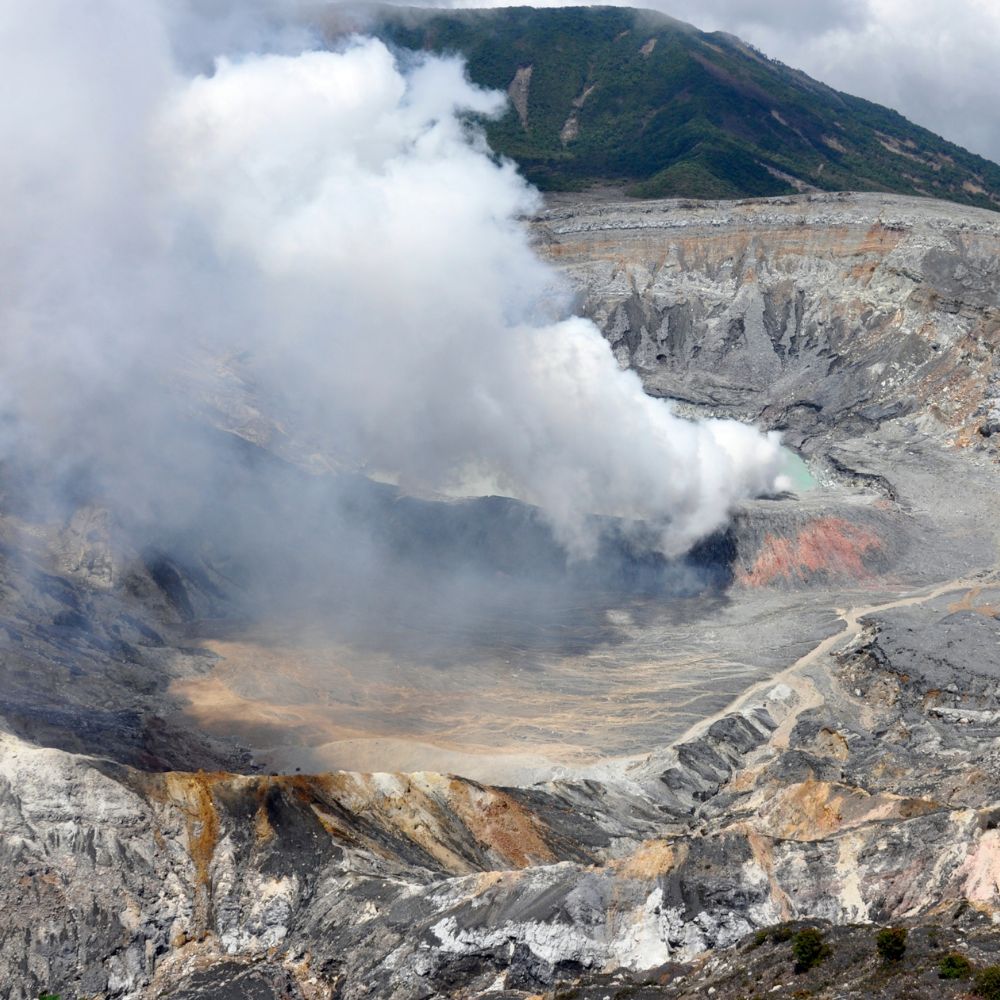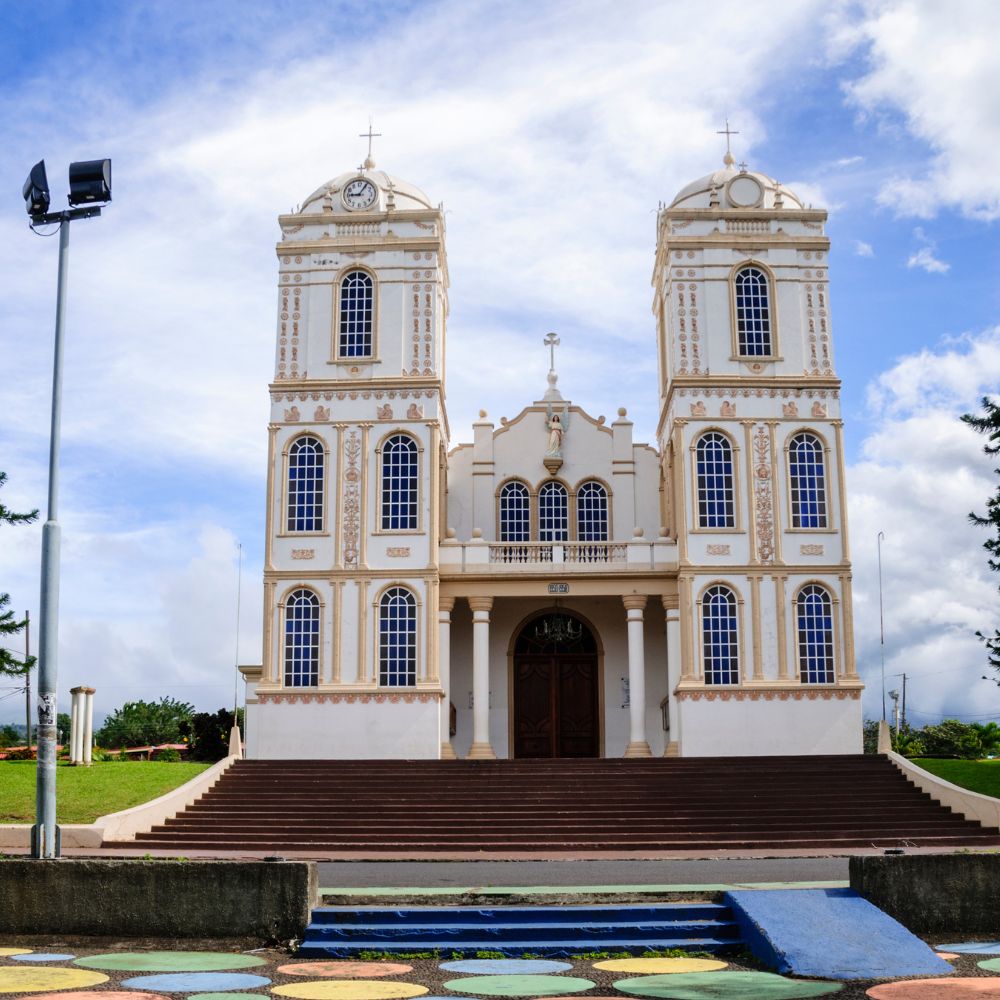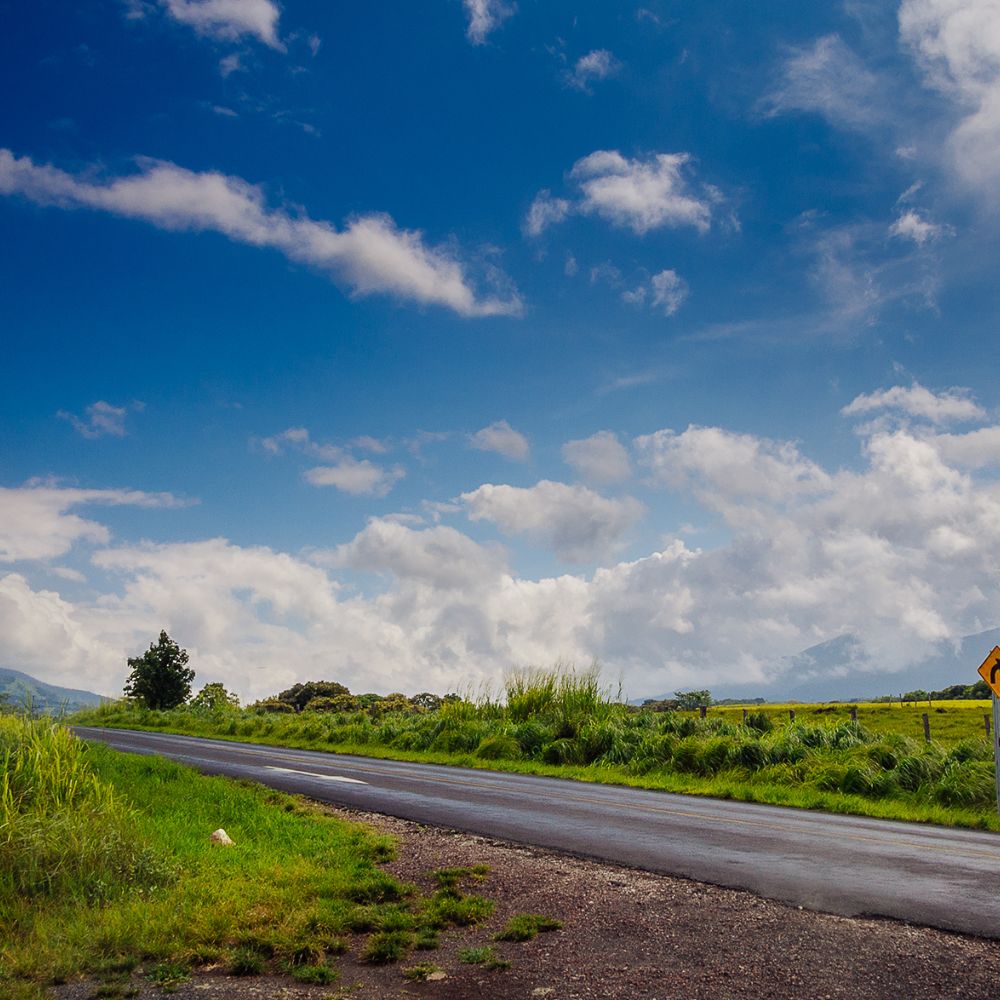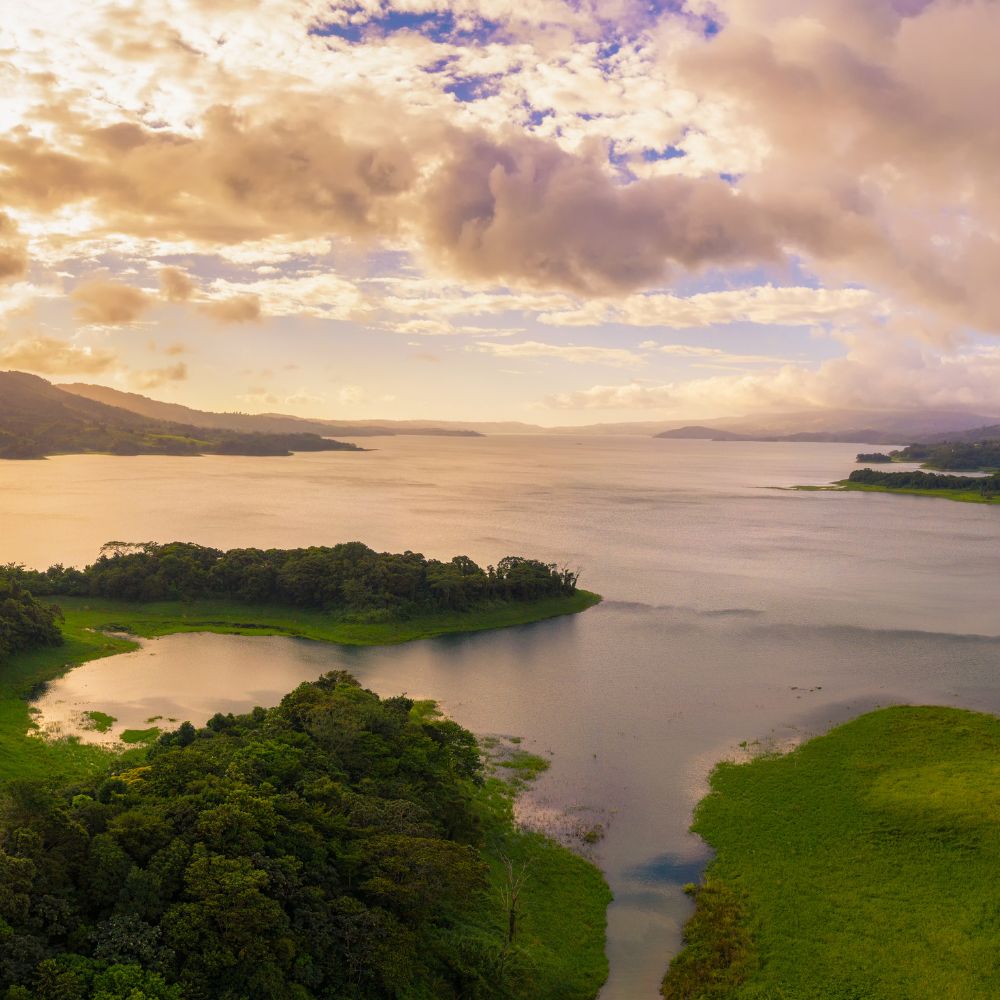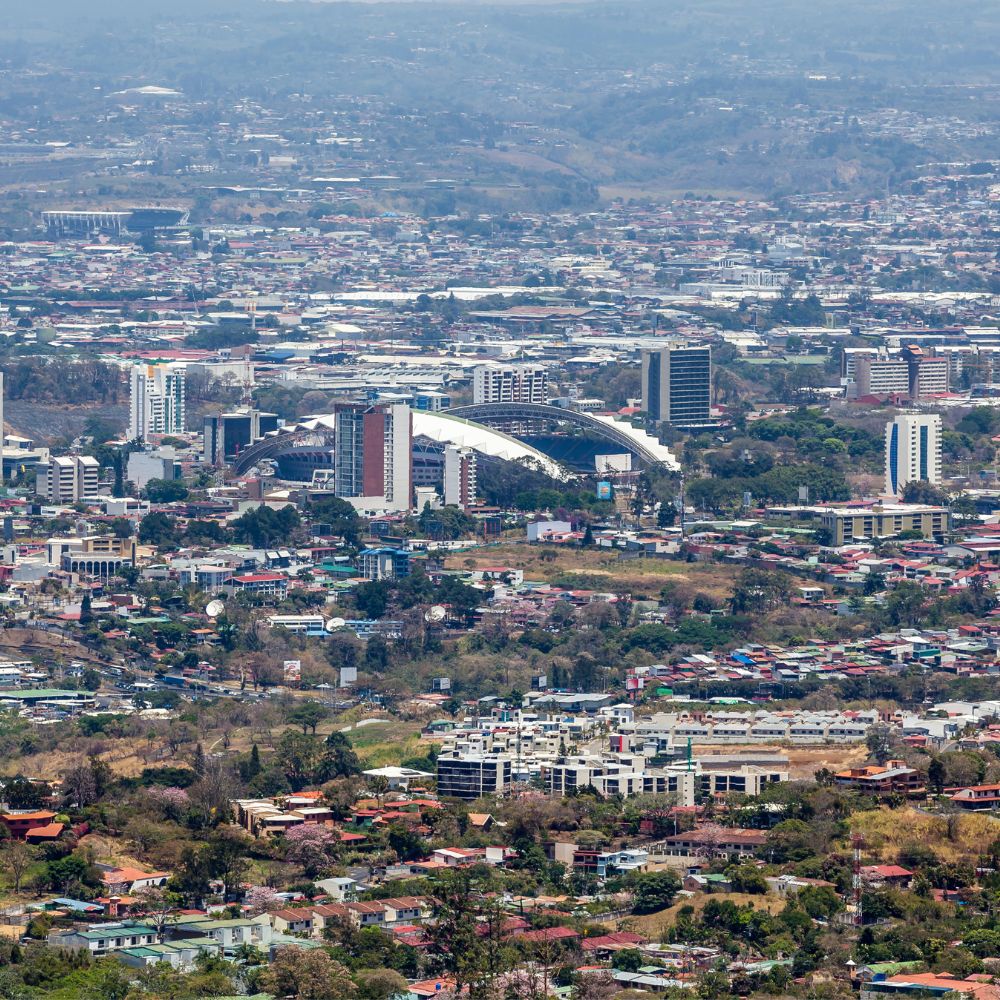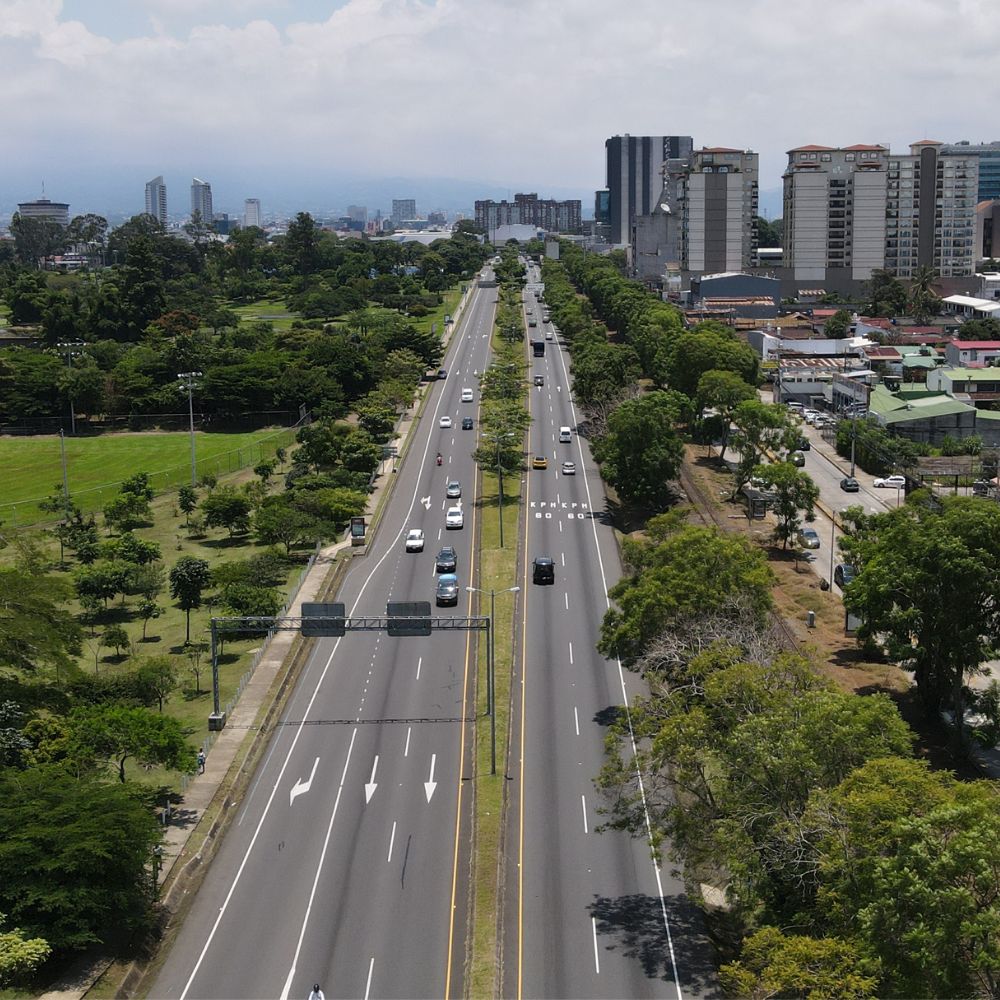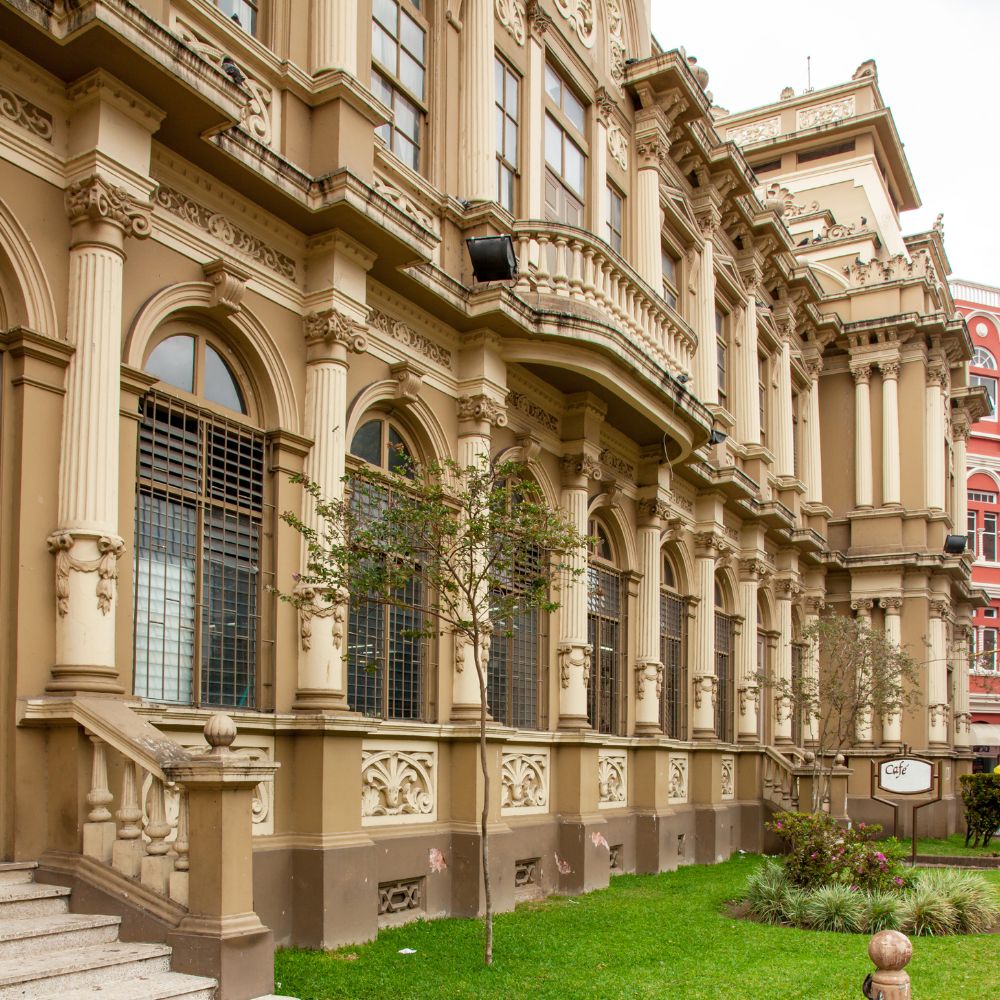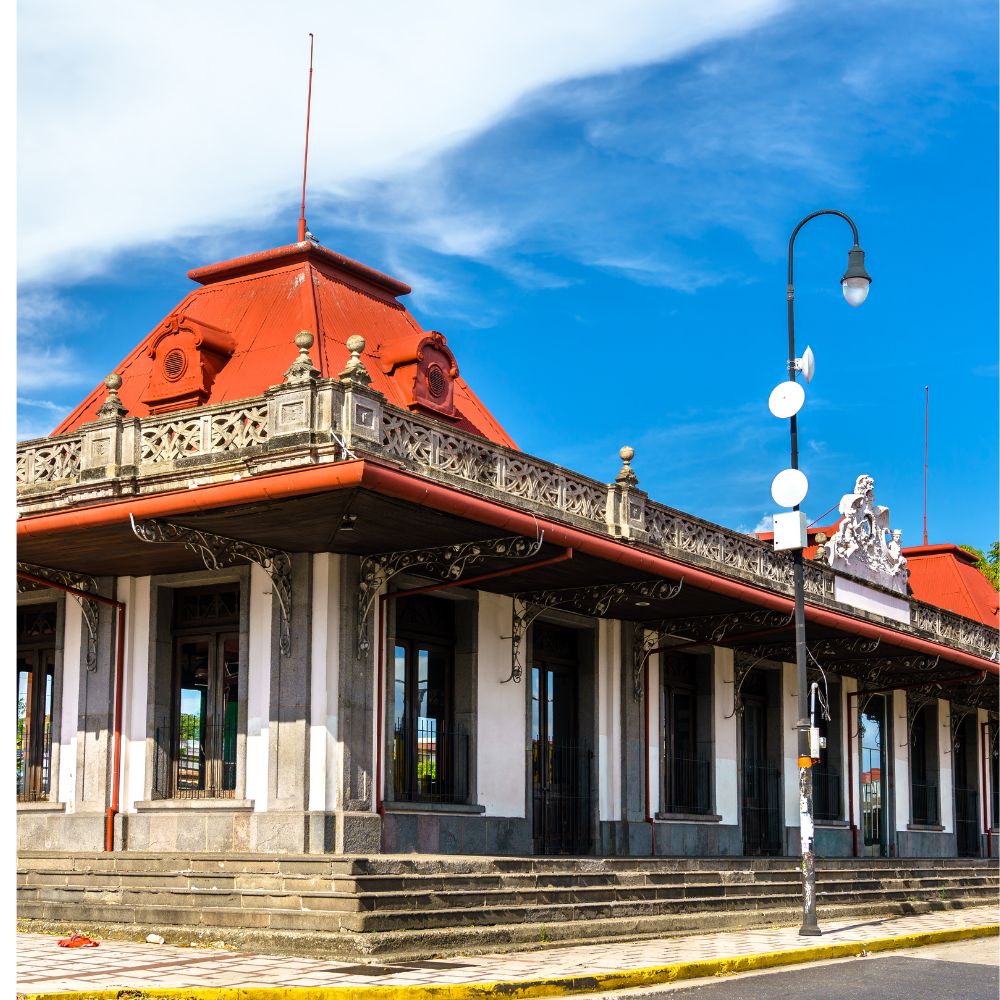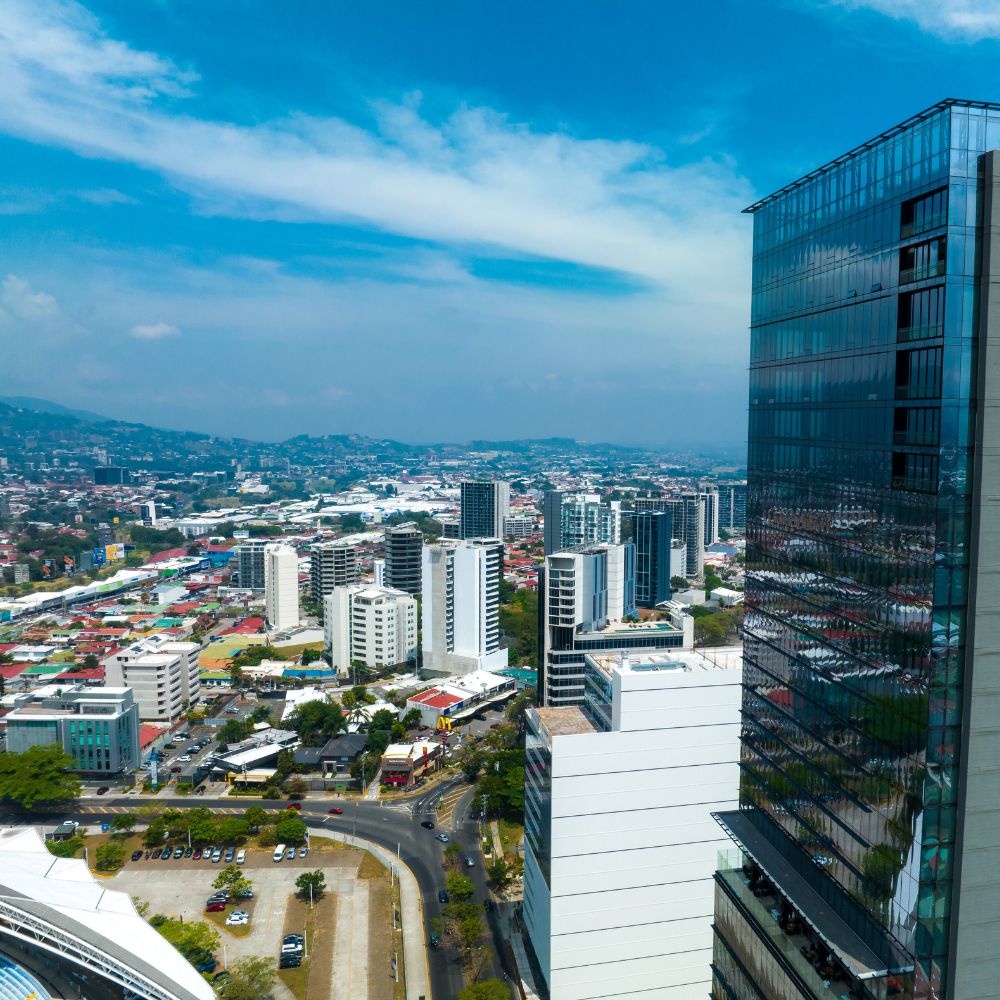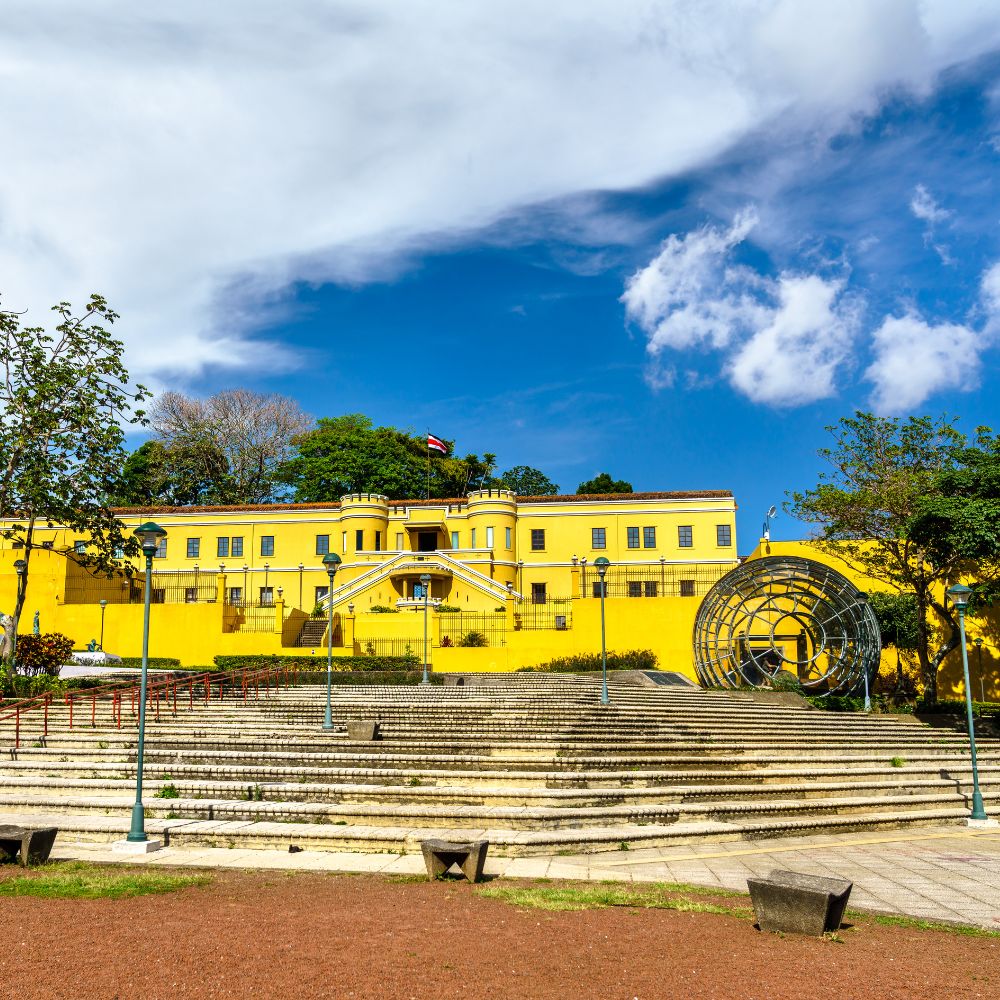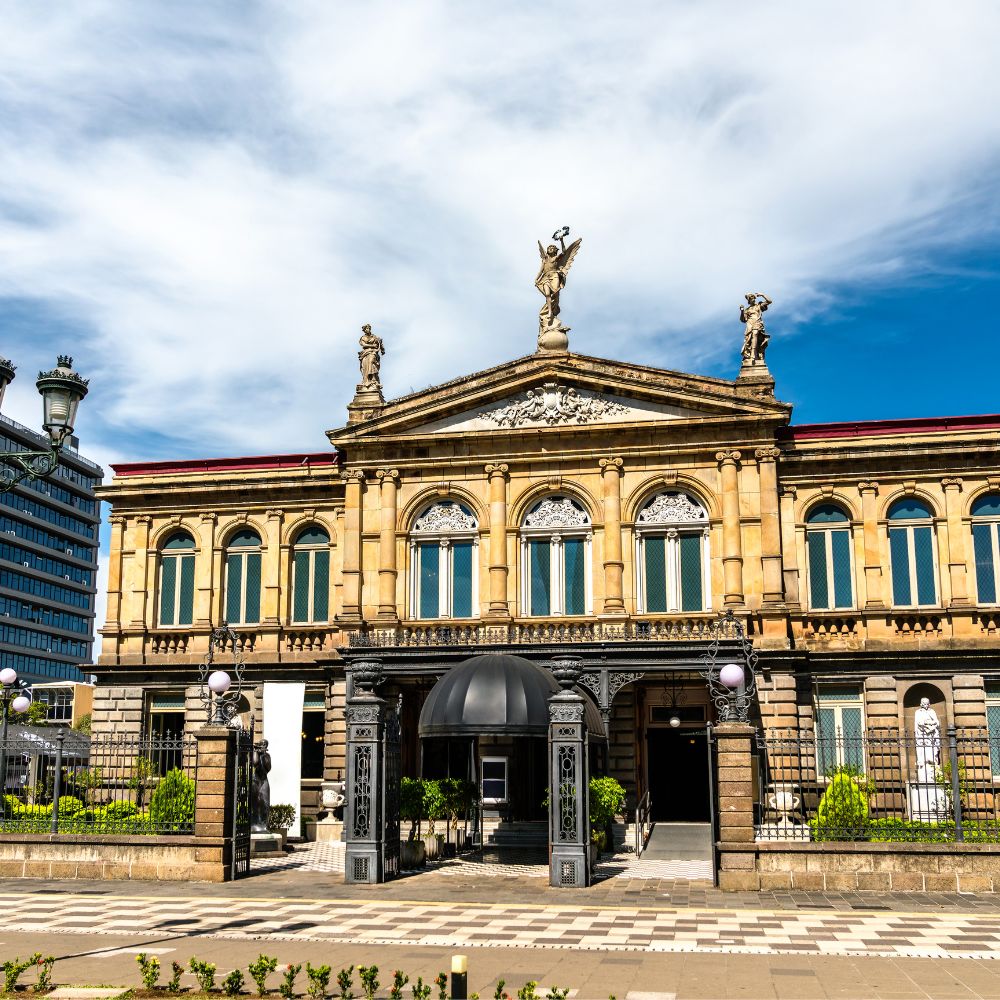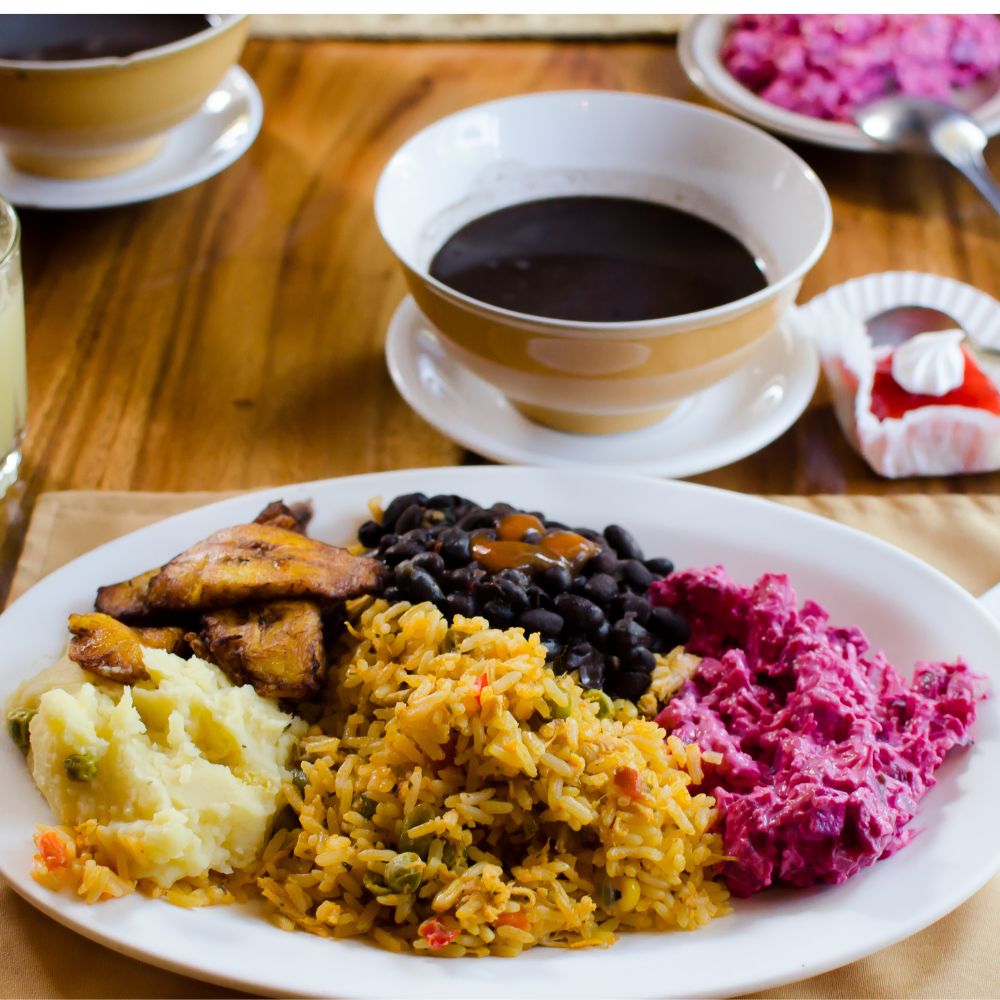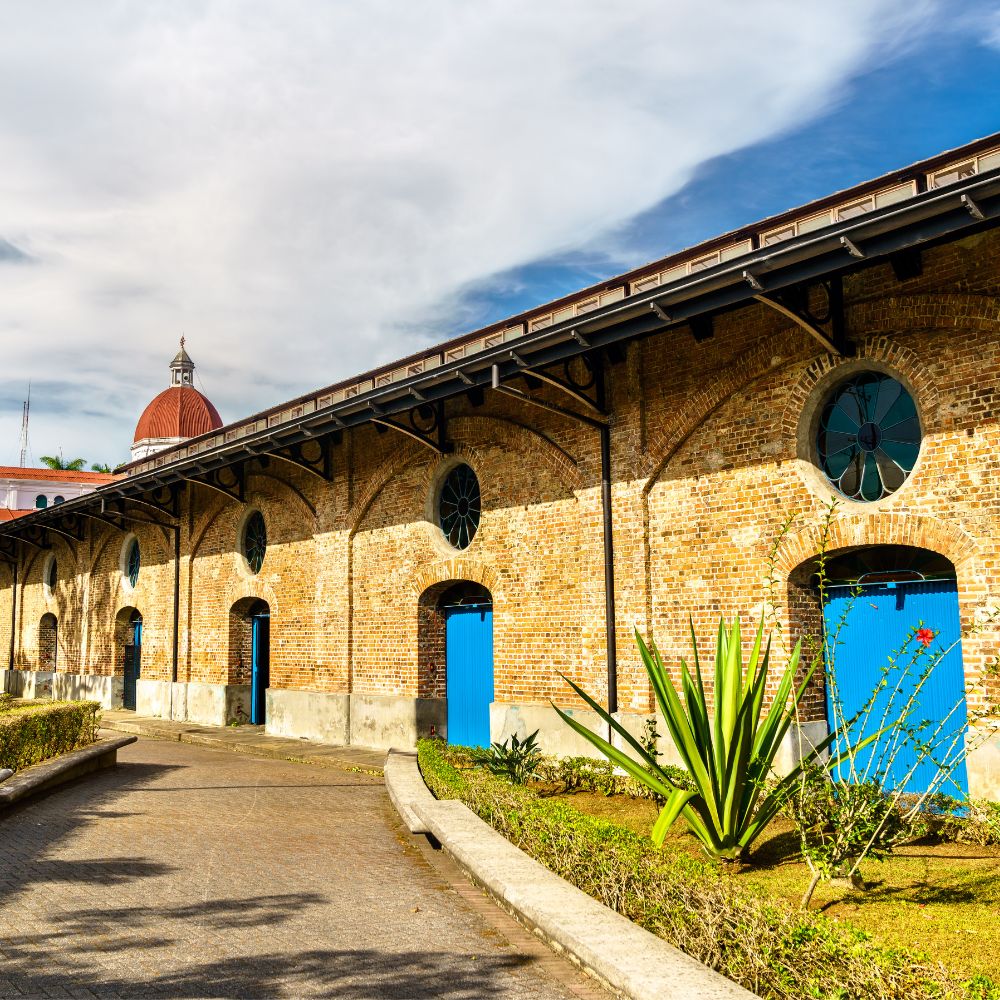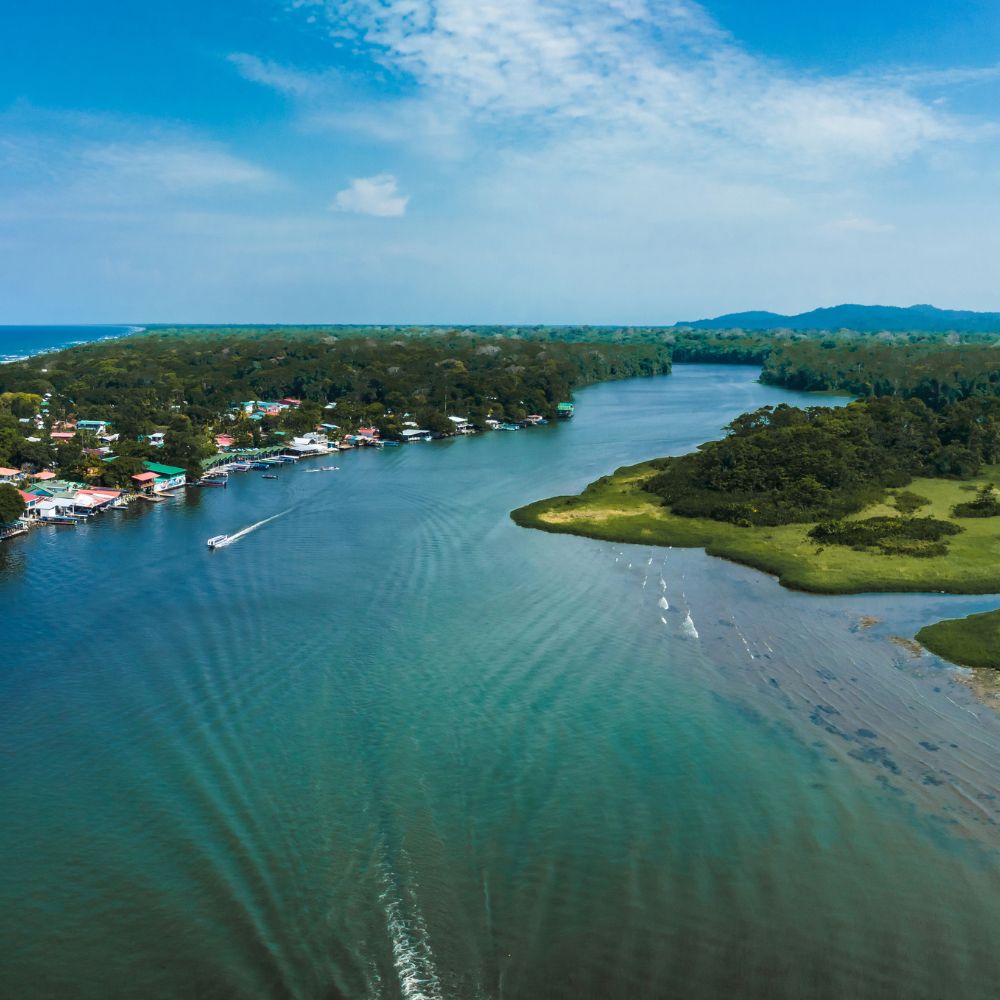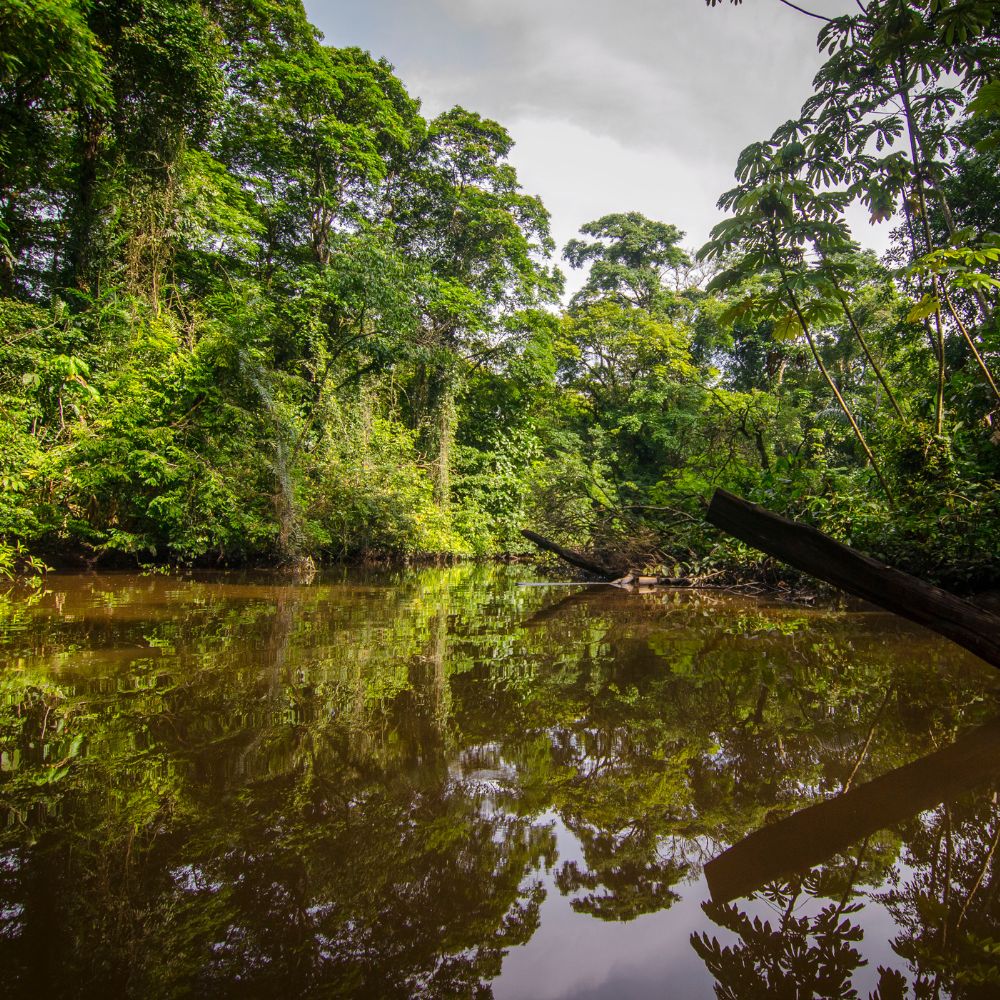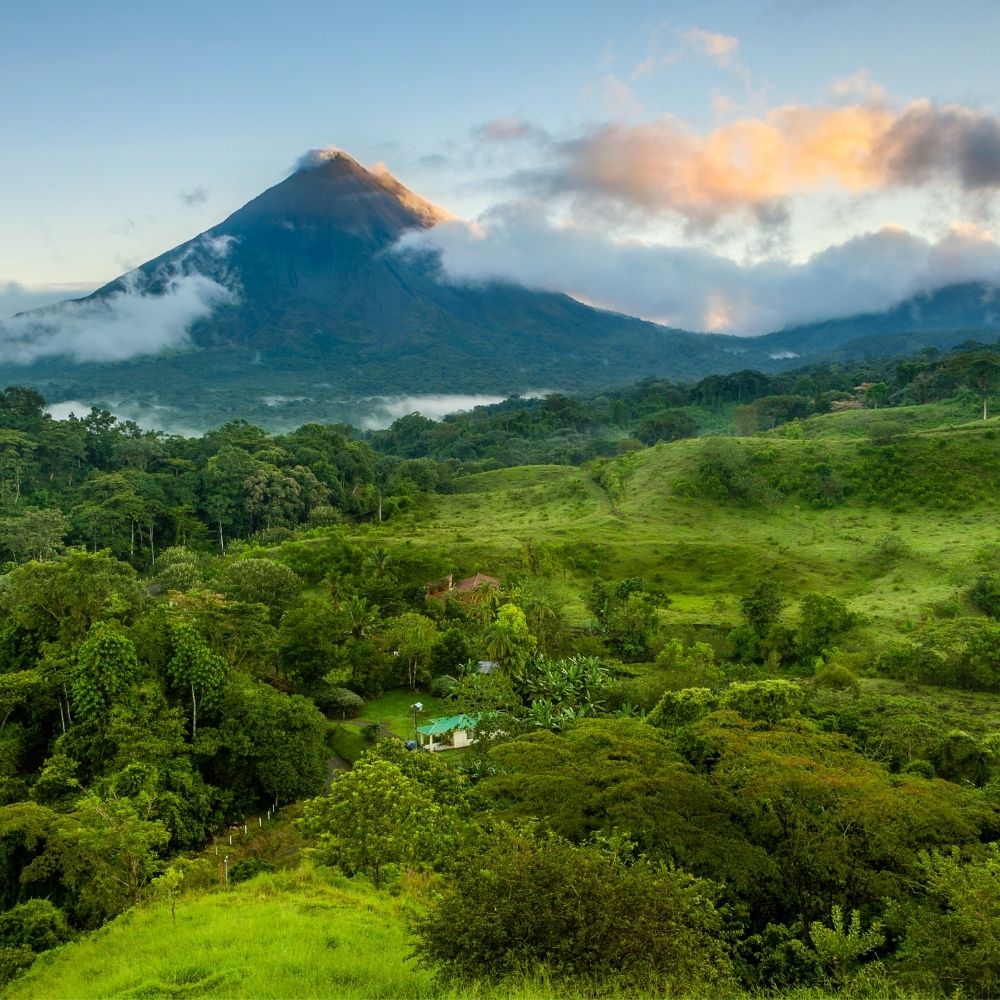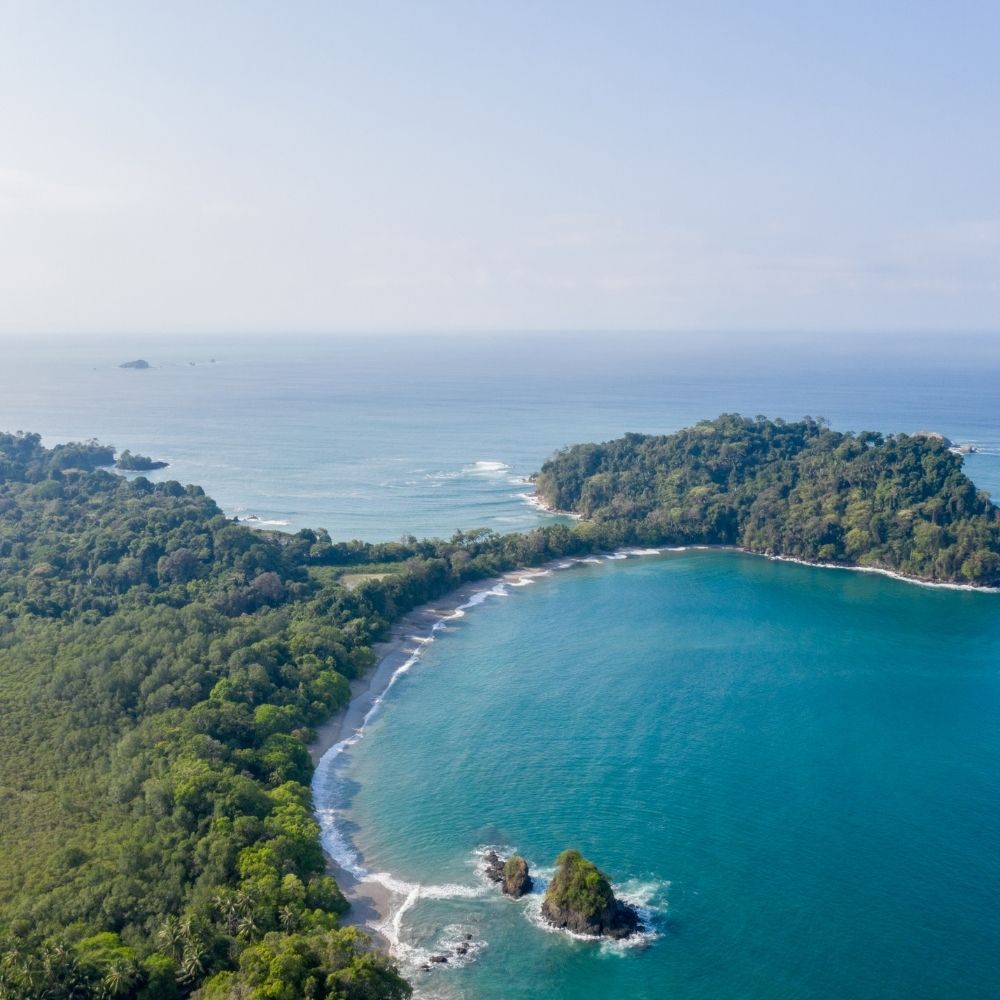Rincon or Arenal Volcanoes are both magnificent and quite unique places, and both offer great activities. If you can go to both, don’t worry about it! They are fantastically different. If you are unable to attend both due to time constraints, please continue reading. It may help you decide which one you will enjoy the most.
The Arenal Volcano region is one of Costa Rica’s most renowned tourist destinations. With the massive volcano looming over the landscape, the area boasts amazing rainforests, hot springs, a large, lovely lake, and an incredible variety of experiences.
The Rincon de la Vieja is a massive and quite active volcano, not known as the Arenal, but it is an excellent choice of Guanacaste. Its forest is super diverse, and amid the hiking trails, you will see the volcano’s activities in the form of bubbling ponds and steaming cracks.
In both of them, you will find breathtaking rainforests of various kinds, hundreds of birds, three species of monkeys, and several reptiles and amphibians. You will also find fantastic adventures in both, from horseback riding to waterfall rappeling.
They both have fantastic spas and excellent hotels.
So we will talk about the differences and similarities to help you make a decision.
Where are Arenal and Rincon de la Vieja?
The Arenal Volcano area is located on the Northern Plains in the region of San Carlos, in Alajuela province. La Fortuna is the region’s principal town, and it is 17 kilometers from the Arenal Volcano National Park’s entrance.
The Rincon de la Vieja Volcano is located in the province of Guanacaste. The closest big town is Liberia, located 25 kilometers from the entrance.
MAPA
The distance from the Arenal Volcano to the Juan Santamaría International Airport is 120.4 km (2 hr 50 min), and the distance from the Guanacaste International Airport is 141.2 km (2 hr 36 min).
The distance and time from both airports to Arenal Volcano are fairly similar.
The distance from the Rincon de la Vieja to the Juan Santamaría International Airport is 223.0 km (3 hr 43 min), and the distance from the Guanacaste International Airport is 25.5 km (39 min).
Now you know that if you arrive at the Guanacaste International Airport, the Rincon de la Vieja is much closer.
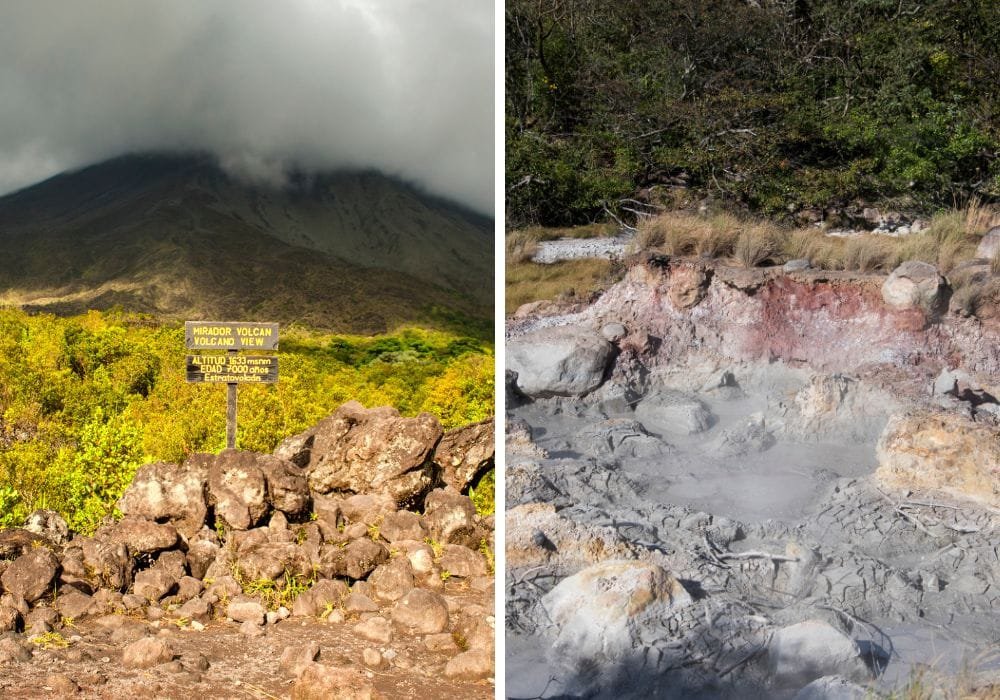
History of the Rincon de la Vieja
The name alludes to a local legend about princess Curabanda’s lover, Mixcoac, the leader of a nearby hostile tribe, who her father Curabande threw into the crater after discovering their romance. She continued to live on the crater’s rim, giving birth to a son. She tossed her son into the volcano to be with his father. She continued to live on the volcano and became a hermit on the mountain, and she was attributed with healing skills.
Rincón de la Vieja is the highest peak of Rincón de la Vieja National Park, rising 1,916 meters (6,286 feet) above sea level. It most recently erupted in June 2021. On the volcano’s slopes, there are several fumaroles and hot springs. Fesic lava is responsible for its formation.
Only Rincón de la Vieja, Turrialba, and Poás are considered active as of 2022. (01)
A brief history of the Arenal Volcano Region.
Arenal Volcano’s existence dates back more than 7000 years, being the youngest of all Costa Rican volcanoes. For many years, luscious rainforests covered the mountain, preventing it from being considered a volcano.
29th of July, 1968
The Arenal volcano erupted severely on Monday, July 29, 1968, around 7:30 a.m. For several days, the eruptions proceeded unabated, burying almost 15 square kilometers under lava, boulders, and ash. When it was all over, the eruptions had buried three tiny villages—Tabacón, Pueblo Nuevo, and San Luis—and killed 87 people. The eruptions destroyed the area to the west of the volcano, never reaching the east side.
During its frenetic activity, the volcano shot large boulders—some weighing several tons—into the surrounding area, forming hundreds of visible craters near the National Park.
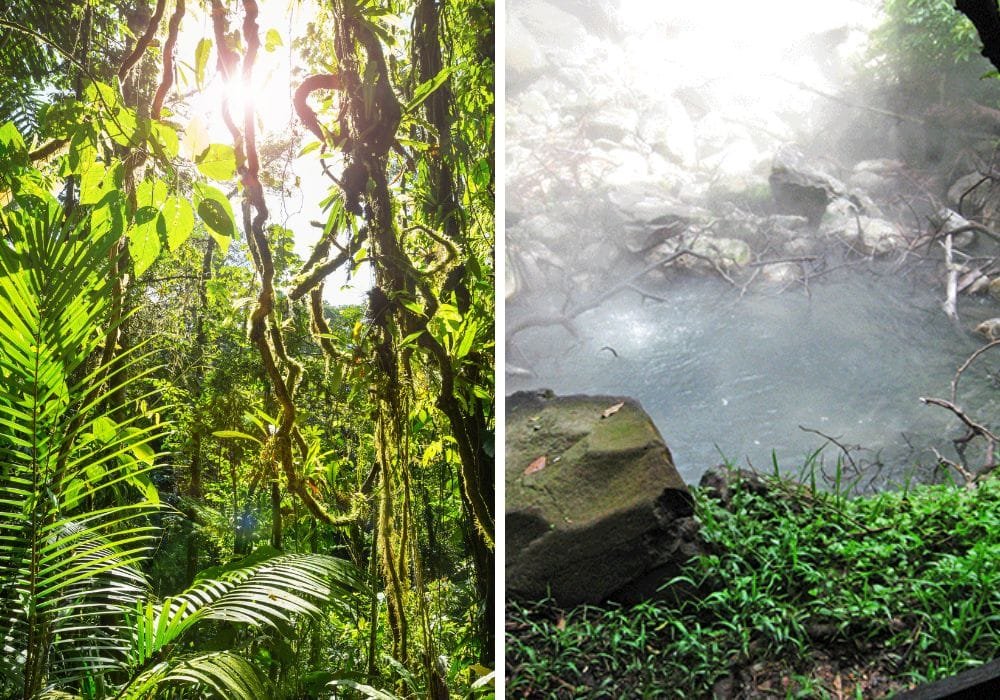
Both of them provide electricity.
Rincon de la Vieja Geothermal Plant
Several hot springs and regions of bubbling mud on the volcano’s slopes indicate significant geothermal energy sources. Researchers have investigated the viability of accessing these reservoirs, predicting a 140 megawatt producing capacity for the volcano. However, because the region is part of a national park, drilling was restricted to test wells until 2001.
The Las Pailas Geothermal Power Plant development to 55 megawatts began in 2013, supported by European Investment Bank financing.
Lake Arenal Hydroelectrical Plant
In 1979, the construction of the Arenal dam near the lake’s eastern side increased the size of Lake Arenal. This hydroelectric plant is located at the lake’s western end. It is strategically significant to Costa Rica, once providing 70% of the country’s power but presently generating closer to 17%, and was also a driving factor behind Costa Rica’s green energy strategy.
The northeastern shore of the lake became the new location for the existing villages of Tronadora and Arenal during construction.
Water from the lake is tunneled to the country’s parched North Pacific, passing via three turbine-driven generating sites before being diverted into an irrigation system of canals that has dramatically enhanced Guanacaste’s agricultural production.
Tourism on the Arenal Volcano
We must start by saying that the travel industry did not get to Costa Rica until the late 1980s, as the cold war receded and all the different wars in Central America stopped little by little.
The region of Arenal (same as Rincon de la Vieja) was a region of big cattle ranches and fruits and vegetable production. Even though the region was as lush, fertile, and beautiful as it is now, there was only one restaurant and one hotel.
People could only come to Arenal for the day in lengthy day trips that stopped at the volcano’s bottom to see the continuous eruptions. There were no facilities, and it mainly was all improvised.
Little by little, the farmers saw the future of tourism and started turning their farms into hotels and tour operations.
The Arenal Volcano region developed and is today one of the most visited sites in the country, providing dozens of activities for visitors.
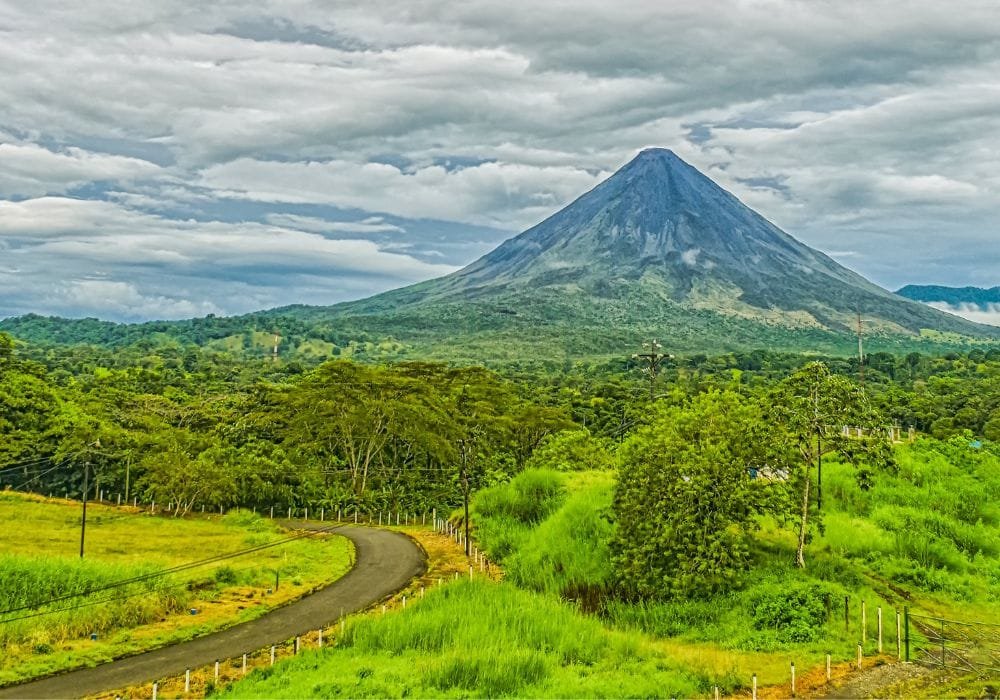
Tourism in the Rincon de la Vieja
The Rincón de la Vieja Volcano is located inside the Rincón de la Vieja National Park, which covers 12,759 hectares (31,530 acres) and protects both montane and dwarf cloud forests. Trails travel through the park from the Santa Maria ranger station, encountering hot springs and waterfalls along the route. Sloths, tapirs, kinkajous, pumas, jaguars, and howler and spider monkeys may be seen in the park.
Hikers could formerly ascend to the crater, and guides with expertise in wildlife, birding, geology, and other fields are available.
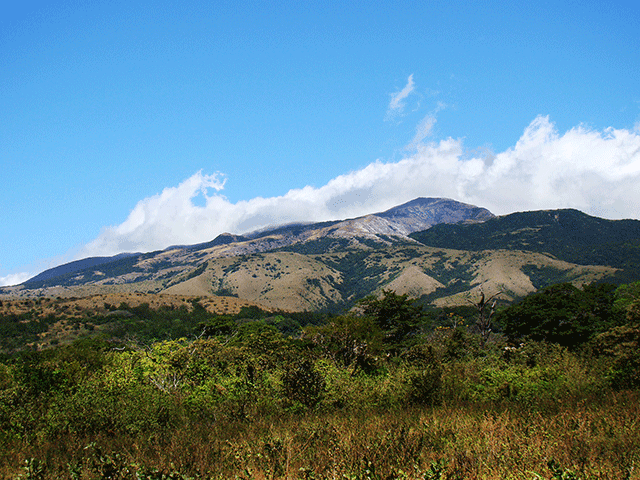
The Arenal Region’s Weather
The Arenal Volcano Region has enjoyable weather, as green as can be; it’s hot and humid all year round; its average temperature is 28°C (82°F), yet on a hot day in March or September, it may reach 33°F (88°F).
The bright season is in March and April, and then again in September and October; however, January and February may be pretty sunny and only rainy if there is a cold northerly influence.
Even during the heaviest phase of the rainy season, it has long stretches of bright days punctuated by surprise storms and heavy downpours.
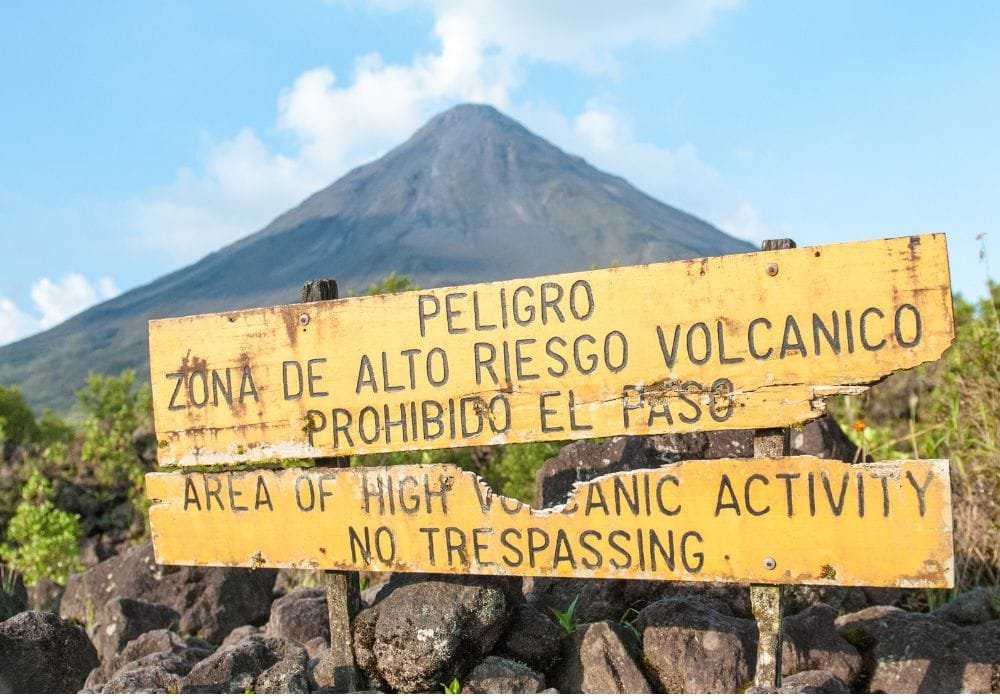
The weather of Arenal Volcano and Rincon de la Vieja throughout the year
March through May
The springtime in Costa Rica is exceptionally sunny and beautiful. The weather is extremely dry, and the sight of towering trees in full bloom is truly breathtaking.
June through August
In Rincon or Arenal Volcanoes, you will find the rainy season already installed. However, it rains mainly for a few hours in the afternoon or evening.
September and October
Arenal Volcano
As the Arenal Volcano is on the Caribbean side, these two months happen to be the sunniest months of the year in the Arenal Volcano area and all the Caribbean Coast.
Rincon de la Vieja
This is the rainiest time of the year. The place is as green and lush as possible, and the dry tropical forest turns into a green rainforest. It is lovely.
November
Arenal is experiencing heavy rainfall, which is expected to persist until January or even February.
In Rincon de la Vieja, the sunny season starts this month. And sunny, dry days are quite the norm by the end of the month.
December through February
Rincon de la Vieja’s weather is ideal this time of year for warm-weather visitors. It rains very little, and it is pretty windy. It is a wonderful time to visit the National Park, as you can see the contrasting humid rainforests and the tropical dry forest in one place.
Arenal’s weather is pleasant; however, it may be rainy. The Caribbean Sea influences Arenal Volcano, and it holds the rainy season sometimes until January and even February.
Activities in Rincon or Arenal Volcanoes:
Both areas coincide in a few remarkable facts.
Rincon or Arenal Volcanoes, both vast cattle regions, are home to cowboys, horses, and a wealth of adventure!
Find below the different adventures you can find in both places:
| Arenal | Rincon | |
| Ziplining | Yes | Yes |
| Horseback Riding | Yes | Yes |
| Hiking | Yes | Yes |
| Bird Watching | Yes | Yes |
| Canyoning | Yes | Yes |
| Wall Climbing | Yes | |
| Waterfalls | Yes | Yes |
| Rafting | Yes | No |
| Tubing | Yes | Yes |
| Kayaking | Yes | No |
| Hanging Bridges | Yes | No |
| Hot Springs | Yes | Yes |
| Spas | Yes | Yes |
Accommodations in Rincon or Arenal Volcanoes
Arenal Volcano
The Arenal Volcano Region offers a wide range of lodging options, and, as is customary, it is up to you to decide which is ideal for you.
There are options for all budgets, from modest cabins and hostels to Forbes-awarded five-star resorts and boutique hotels. There are hotels where you may fully immerse yourself in the region’s jungles. Others focus on the breathtaking view of the massive volcano and the rejuvenating effects of the hot springs and baths.
Various options focus on wellness, the Arenal Lake, or the region’s fantastic bird viewing.
Some sublime boutique hotels have garnered recognition as the world’s most luxurious hotels.
In Arenal Volcano, you will not find any big chain hotels.
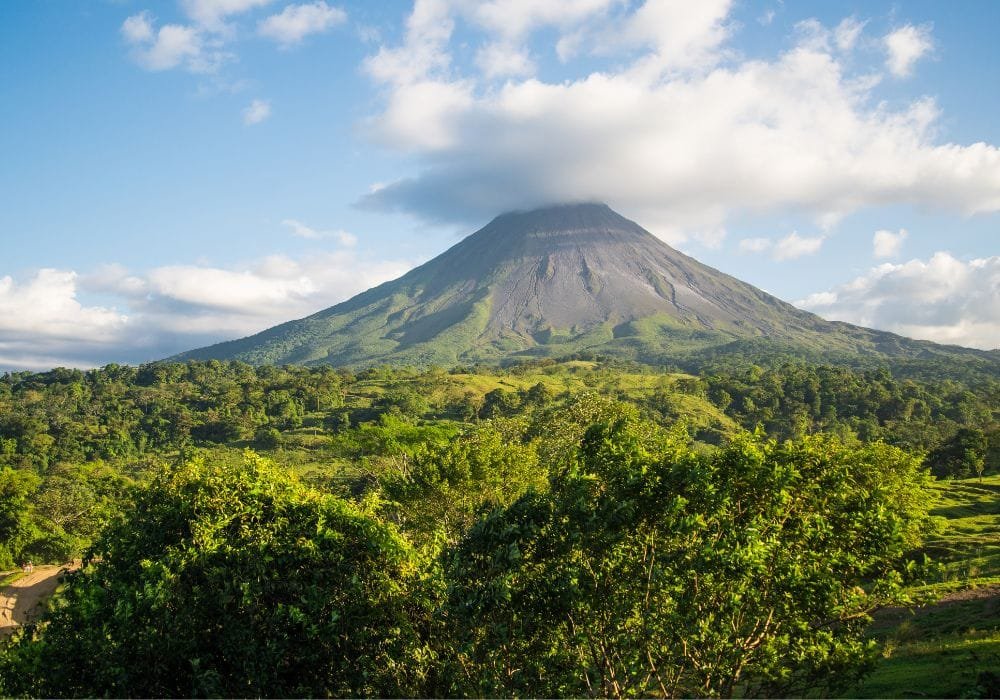
Rincon de la Vieja
In Rincon de la Vieja, you will find fewer options regarding accommodations. However, there are some perfectly excellent options.
Most hotels in the area are large cattle haciendas, featuring beautiful rooms and a variety of activities.
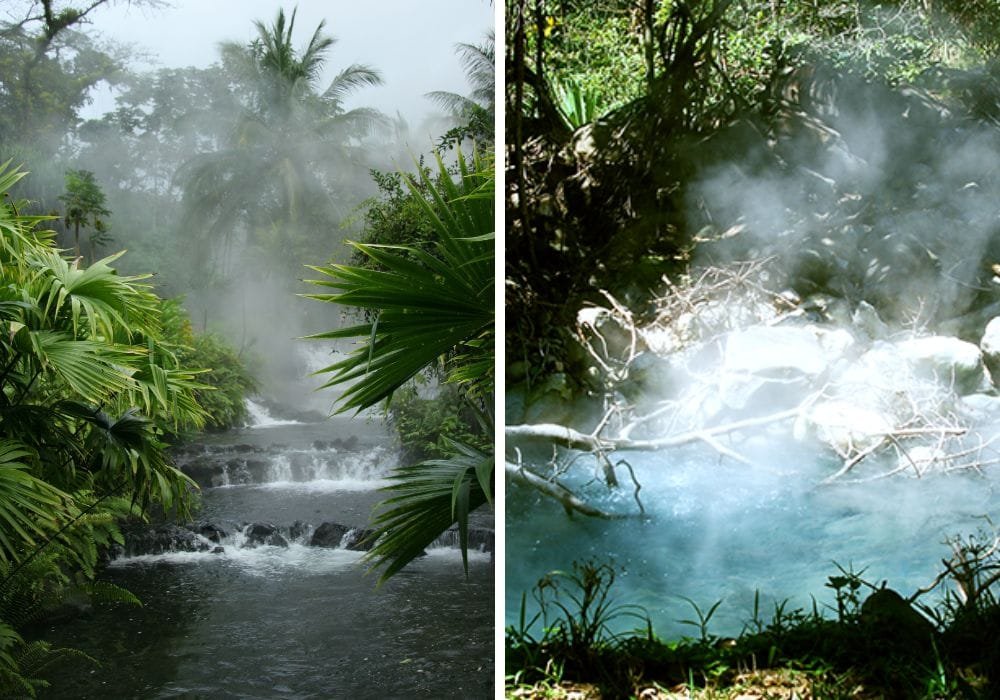
To wrap it up
Both places are magnificent, and if you can visit both, as said previously, please do. If you can’t, though, you are just another excuse to come back to Costa Rica! Send us a note, and we’ll start planning your trip now!
This post appeared first in Tavo Leon Customized Tours and was written by Olga Sáenz

